This post may include affiliate links.
If you make a purchase, I'll earn a small fee at no extra cost to you.
Corn fresh from the garden is an amazing, delicious treat. You can grow corn in containers, even if you don’t have lots of space! Follow these easy tips to grow corn in pots or containers, and enjoy a great harvest.
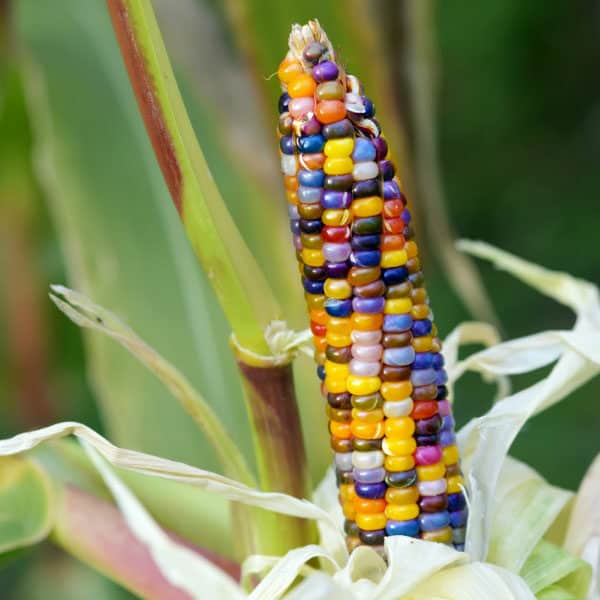
Thank you to Smart Pot® for sponsoring this article.
Our backyard doesn’t have a lot of garden space–just 3 small raised beds next to the pool.
Grandpa always grew corn in long rows, and I never tried because I thought we didn’t have enough room. But I was happy to learn that you can grow corn in containers!
Best Varieties for Container Planting
Before you choose the corn you’ll plant in your containers, you need to know what kind of corn seeds to buy. There are three main types of corn, and they’re used for different purposes.
Sweet corn is the type we eat, and the kind you’ll find at the grocery store.
Flint corn has hard and sometimes colorful kernels. It’s usually grown for animal food (with the exception of popcorn varieties, which are a type of flint corn).
Dent corn (field corn) also has hard kernels, and is used to make cornmeal or for animal food. It’s called dent corn because as the kernels dry, a little dent forms in the surface.
The best types of corn for container planting are smaller, dwarf types. These varieties grow to about 5-6 feet tall, instead of the larger traditional varieties.
Painted Hill Sweet Corn has kernels in yellows, reds, purples, blues, and white. This is the one I’m growing!
Robust Pop Popcorn Seeds has yellow, pearl-shaped kernels that dry to a rich orange color.
True Gold Sweet Corn has large ears with golden-yellow kernels.
Martian Jewels Sweet Corn has kernels that are pearl-white, and the cobs, stems, and husks are deep violet.
Best Containers for Corn
There are two ways you can plant your corn in containers–in several small pots, bunched together; or in a single large container. Your container(s) should be wide and at least 12” deep, so the stalks don’t fall over in the wind.
I chose a 25-gallon Smart Pot, which is my favorite pot for container planting. Smart Pots are durable fabric planters that are made in the USA. They’re weather-resistant, UV resistant, and come in lots of different sizes.
I’m growing citrus trees, blueberries, and potatoes in my Smart Pots this year. Did I mention that Smart Pots are BPA and lead free? That’s important when you’re growing food, and some of the cheaper brands can’t make that promise.
They are also 100% cat-approved.
Sun, Water, Soil
Sun
Corn needs 6-8 hours of direct sun to grow well, and the seeds won’t sprout unless the soil is warm. The soil in containers absorbs heat, so I was able to start my corn seeds in early April.
Water
Corn needs a lot of water–about an inch per week. You want to keep them well-watered when the tassels and silks appear, and during ear formation. If you’re growing popcorn or dent corn, stop watering when the kernels begin to harden.
Since Smart Pots are made of fabric, you might think that too much water will drain out. But if you’re using quality potting soil, the soil will retain the water properly.
It’s actually good that water drains through the Smart Pot! This allows excess salts and fertilizers to wash away, instead of being stuck in the bottom of the pot and burning the roots of your plant.
Soil
Your container corn will thrive in well-drained soil that is rich in organic matter. I like to use EB Stone Raised Bed mix blended with some homemade compost.
Please don’t scoop up a bunch of dirt from your yard for your container garden. Garden soil is too dense and could have fungus, microbes, seeds, bugs, or other critters that will damage your corn. Here’s how to choose the best soil for container gardening.
How to Plant Corn in Containers
Wait until the soil temperature reaches 55-60 degrees consistently, even overnight. Mix some EB Stone Sure Start in the soil before planting.
Sow your corn seeds 1” deep, and about 12″ apart. As you can see, I’m experimenting with crowding the pot.
This Smart Pot has a 24” diameter, so it would only hold a few stalks if I followed the sowing guide. This could mean a smaller yield, or it could mean better pollination. We’ll see! Here’s how they looked after just 3 weeks.
Pollination & Harvesting
Yep, it’s time to learn corn anatomy (don’t worry, this is completely G-rated). Corn is a grass, and it is pollinated by wind–not the birds and the bees.
The first thing you’ll see are tassels, which look like fireworks popping out of the top of the stalk. The tassels carry pollen, so they’re your first hint that pollination is right around the corner.
Silks emerge lower on the plant–you’ll recognize those because they are on the corn we eat. Each strand of silk that’s pollinated becomes a kernel in an ear of corn. If you’ve ever seen corn with blank spots or “skips,” then you’ve seen corn that wasn’t completely pollinated.
Because we’re planting in containers and the stalks are so close together, it’s very likely that they’ll pollinate successfully without our help. But you can ensure good pollination by snapping off a tassel and brushing it against the silks of a few plants. This won’t hurt the plant and will help your harvest!
Harvesting Corn
Your sweet corn will be ready to harvest about three weeks after the silks appear. Keep an eye on them– you’ll harvest when the silks are brown, but not dried. Double-check ripeness by peeling back the husk and popping a kernel with your finger. If the liquid is clear, the corn isn’t ready–it should be a whitish, milky liquid. If there’s no liquid, you’ve waited too long.
If you’re growing popcorn or dent corn, wait until the husks are completely yellow and dry before harvesting.
If you end up with more corn than you can eat, that’s a great problem to have! It’s easy to freeze corn with these simple tips.
Are you ready to start some container corn? Which variety will you try? Next year, we’re going to grow popcorn!

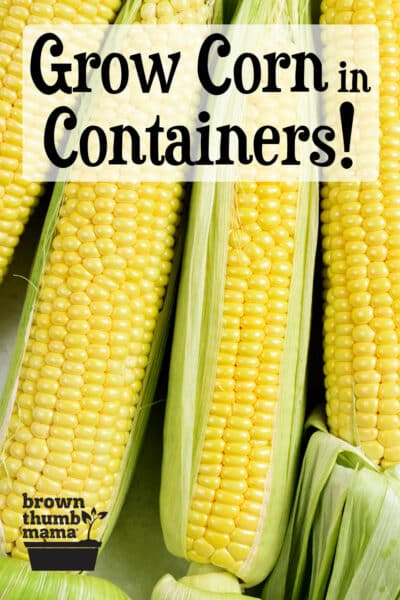
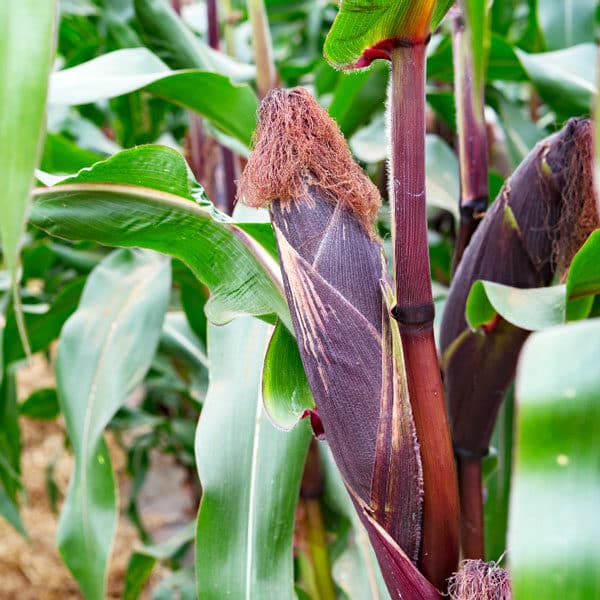
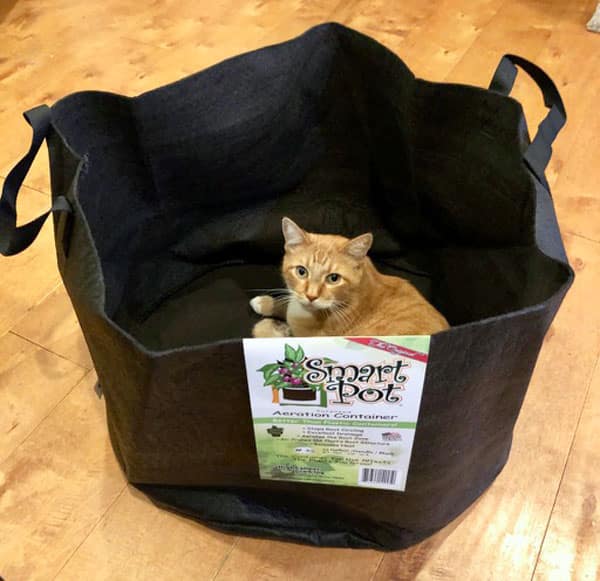
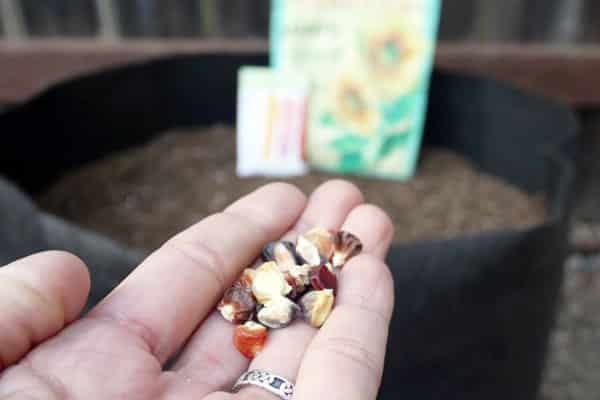
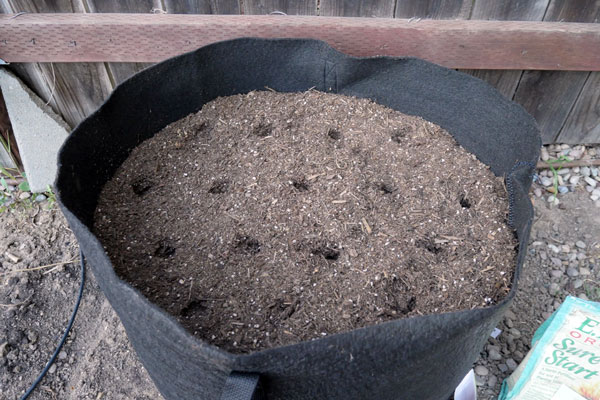
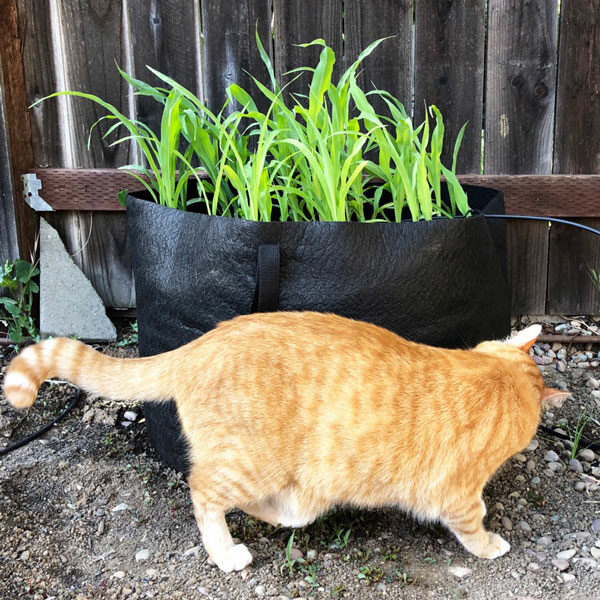
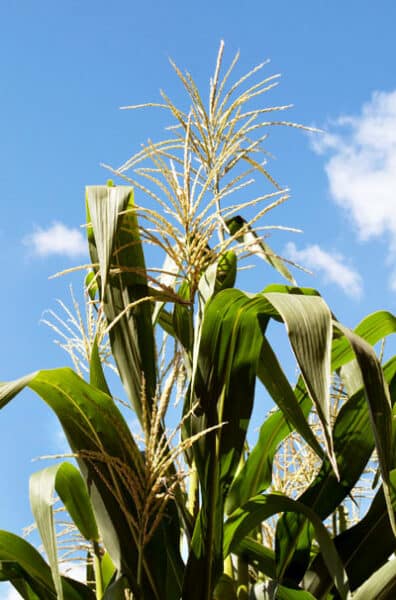
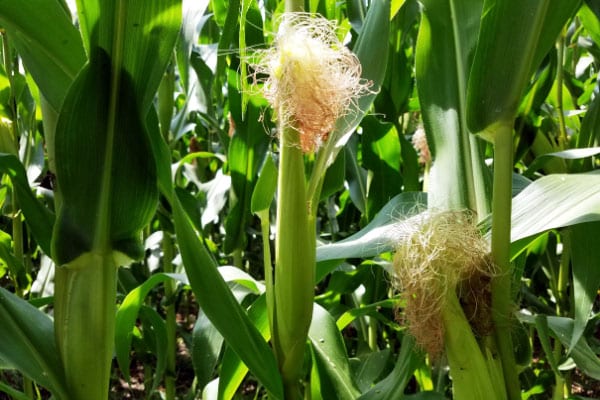
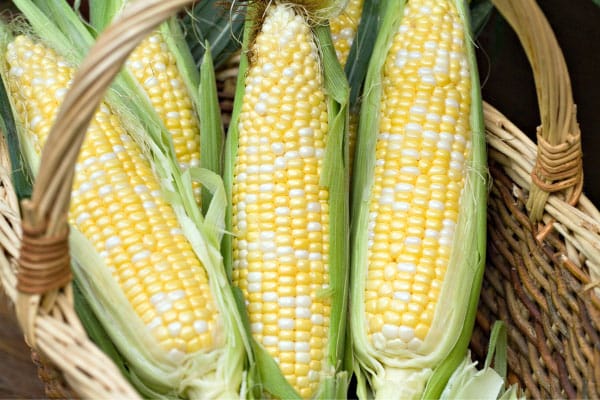
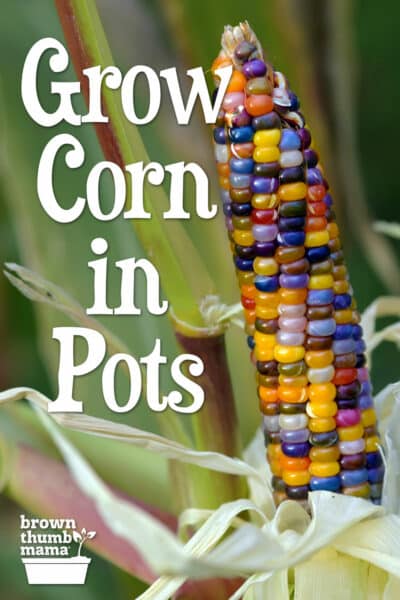

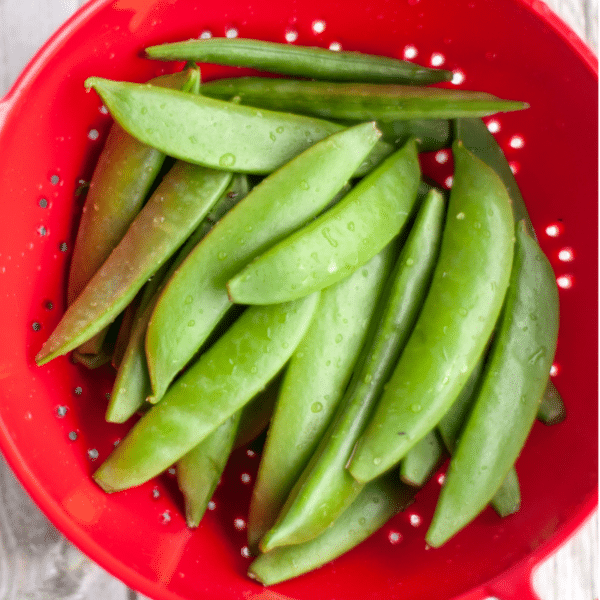
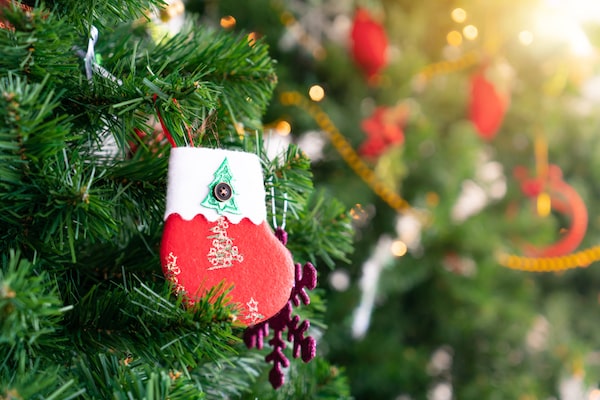
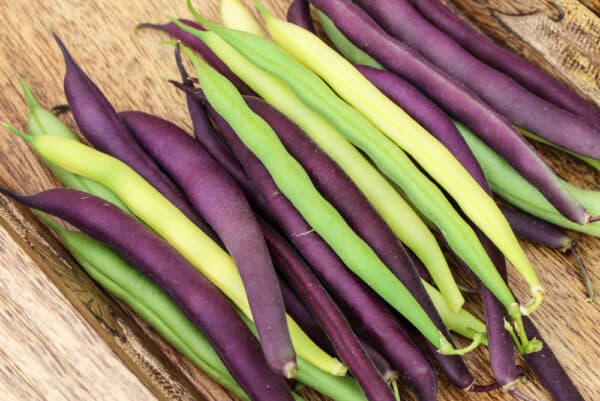
This is great. I’m going to try this next growing season. I think I’ll grow the multi color corn you’re growing. I’m curious to see how your crowding method works. Hope you keep us updated.
Thanks for all the hints. This is my first year growing in zone 9.